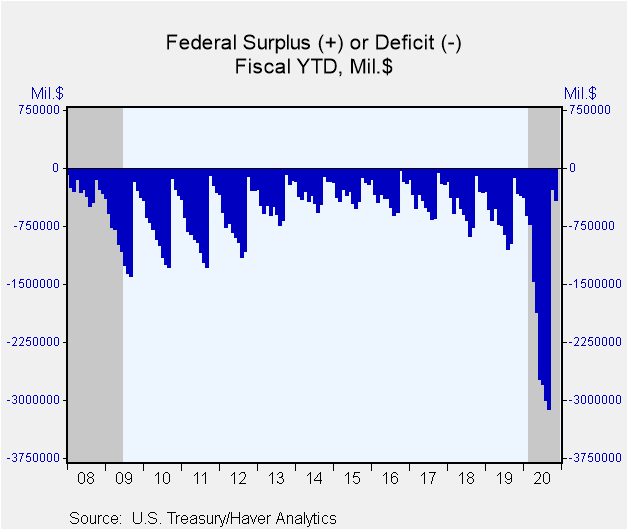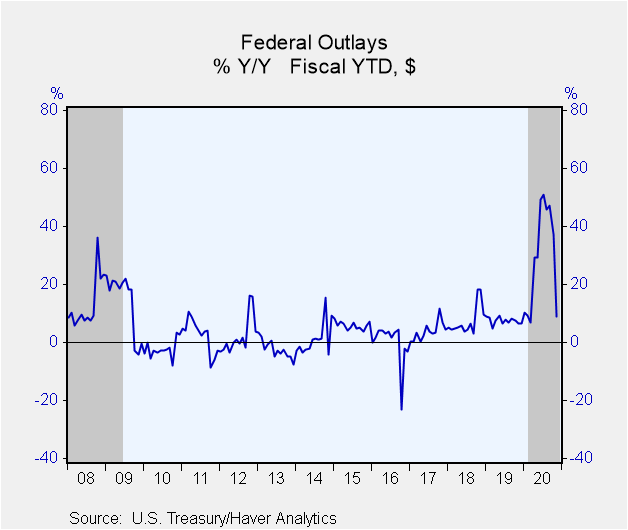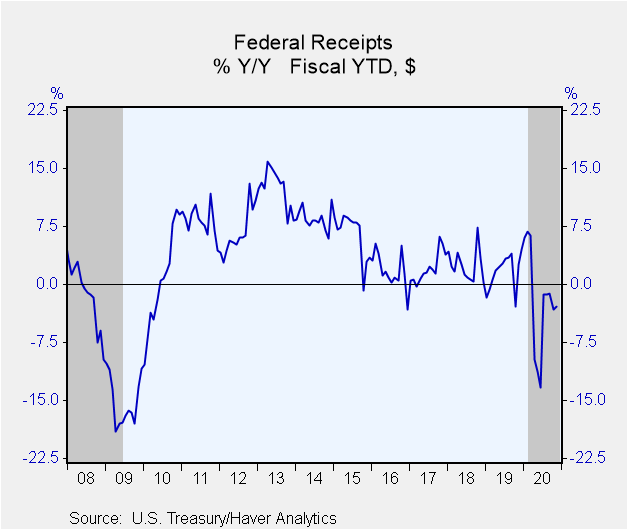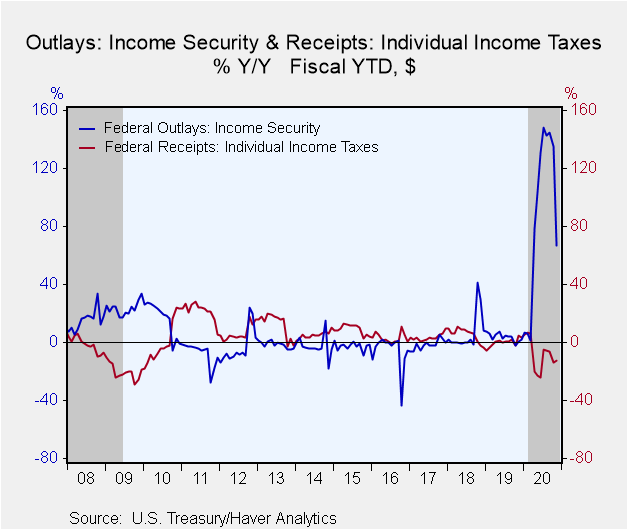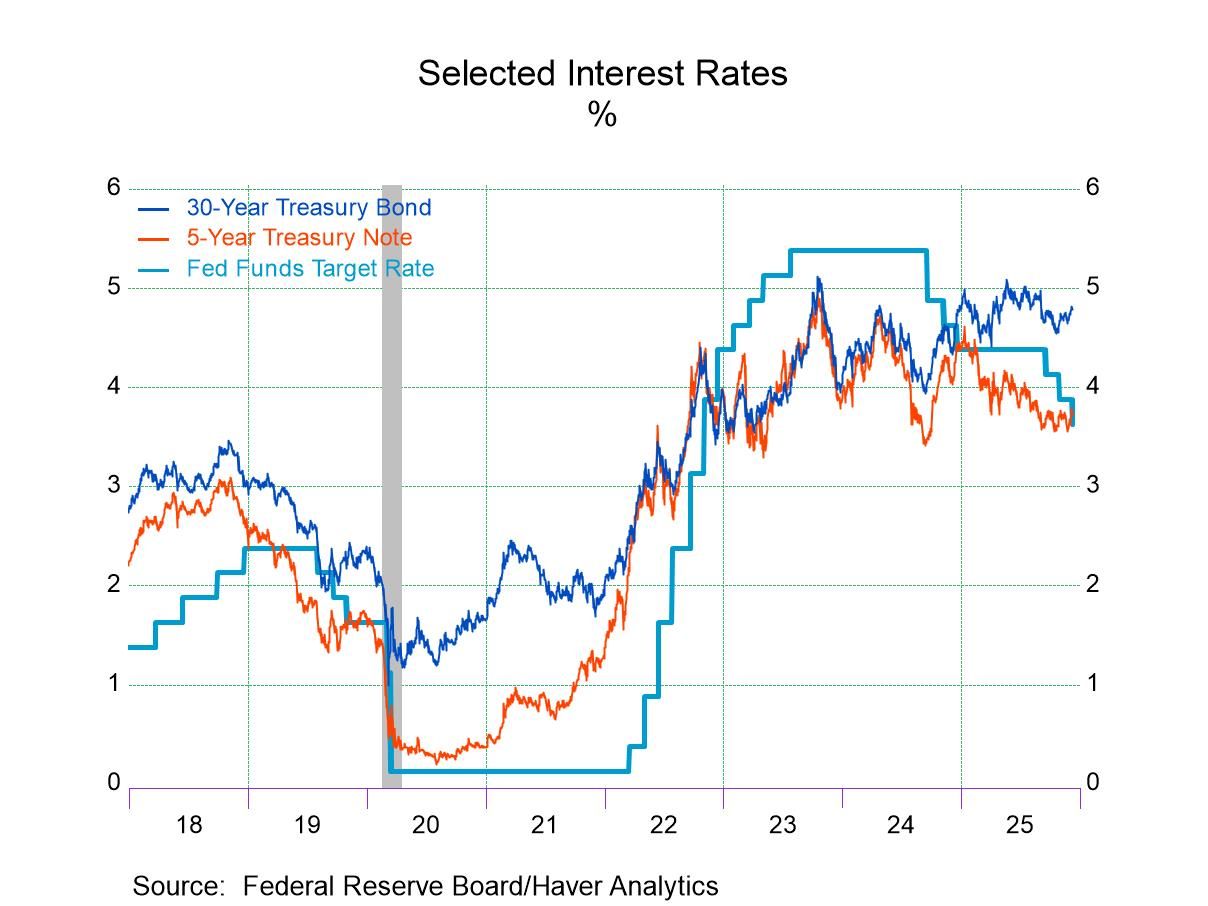 Global| Dec 10 2020
Global| Dec 10 2020U.S. Government Budget Deficit Narrows in November
by:Tom Moeller
|in:Economy in Brief
Summary
• Reduction due to calendar shifts. • Revenue decline led by a drop in personal tax receipts. • Outlay surge driven by higher unemployment benefit payments. The U.S. Treasury Department reported that the federal budget deficit [...]
• Reduction due to calendar shifts.
• Revenue decline led by a drop in personal tax receipts.
• Outlay surge driven by higher unemployment benefit payments.
The U.S. Treasury Department reported that the federal budget deficit declined to $145.3 billion during November compared to $208.8 billion twelve months earlier. The Action Economics Survey anticipated a $200.0 billion deficit for last month.
Federal government outlays rose 8.9% y/y two months into the new fiscal year compared to a 47.3% rise during all of FY 2020. The increase was driven by a 66.7% surge in income security payments so far in FY21 stemming from coronavirus relief payments and a higher unemployment rate. Spending on health care programs increased 18.0% y/y. Social security payments grew a lessened 4.2% y/y but defense outlays eased 0.1% y/y in FY21. Medicare payments declined 15.0% this fiscal year, although the decline largely reflected a weekend start date for the month. Interest payments eased 4.9% so far this fiscal year.
Overall revenues declined 2.9% y/y so far this fiscal year. The recession has lowered individual income tax payments by 12.8% y/y and corporate tax receipts by 16.1% so far in FY21. Growth in social insurance payments rose to 8.1% y/y, and the reduction in global economic trade lowered customs duties by 17.5% y/y.
Haver's data on Federal Government outlays are contained in USECON; detailed data can be found in the GOVFIN database. The Action Economics Forecast Survey numbers are in the AS1REPNA database.
Tom Moeller
AuthorMore in Author Profile »Prior to joining Haver Analytics in 2000, Mr. Moeller worked as the Economist at Chancellor Capital Management from 1985 to 1999. There, he developed comprehensive economic forecasts and interpreted economic data for equity and fixed income portfolio managers. Also at Chancellor, Mr. Moeller worked as an equity analyst and was responsible for researching and rating companies in the economically sensitive automobile and housing industries for investment in Chancellor’s equity portfolio. Prior to joining Chancellor, Mr. Moeller was an Economist at Citibank from 1979 to 1984. He also analyzed pricing behavior in the metals industry for the Council on Wage and Price Stability in Washington, D.C. In 1999, Mr. Moeller received the award for most accurate forecast from the Forecasters' Club of New York. From 1990 to 1992 he was President of the New York Association for Business Economists. Mr. Moeller earned an M.B.A. in Finance from Fordham University, where he graduated in 1987. He holds a Bachelor of Arts in Economics from George Washington University.


